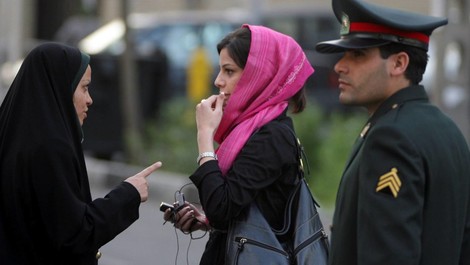Your podcast discovery platform
Curious minds select the most fascinating podcasts from around the world. Discover hand-piqd audio recommendations on your favorite topics.

piqer for: Climate and Environment Globalization and politics Health and Sanity
Mona Silavi is a human and women’s rights activist from the Ahwaz region in Iran. She obtained her bachelor in psychology and specialized in children and adolescence psychology at Damascus University, faculty of psychology and education. She holds a master degree in good governance and human rights in MENA region from Ca’ Foscari University in Venice. She started her activism in Damascus as member of Ahwazi Arab student association. Mona Silavi is a Project Officer at the Unrepresented Nations and Peoples Organization (UNPO) and is the coordinator for topics concerning freedom of religion and belief. She is also a spokesperson of the Al-Ahwaz Democratic Solidarity Party (DSPA). Since 2014 Ms Silavi lives in Belgium as a political refugee
Hijab—Personal Choice Or Ideological Battle Of Men?
The debate over women’s clothing has always been a subject of conflict. A conflict that remains at the heart of political ideologies. I consciously use the word conflict because women's bodies have always been treated as an “ideological battlefield".
In the Middle East alone, I know of three countries where the topic of Hijab was one of the main subjects of political debate between politicians, who either forced or forbade it. From Egypt, where the leader of the Muslim Brotherhood asked Jamal Abdel Nasser to force women to wear the headscarf, to Turkey, where Ataturk forbade it and finally Iran, where women experienced both cases within the span of 100 years.
Back in 1928, Reza Shah, then the leader of Iran, forbade the scarf and ordered the police to remove it by force from women's heads, and by 1979, after the Islamic revolution, the authorities in Iran passed a law making hijab compulsory and arrested the women who did not wear it properly. This led to a mass demonstration in March 1979.
This patriarchal attitude has an international pattern. Far away from the Middle East, Canadian author Margaret Atwood demonstrated how ideological regimes target women primarily in order to be able to control society.
In her dystopian novel The Handmaid's Tale, she pictures a totalitarian state that takes away the free choice and independence of women. There are many similarities between her novel and the situation of women in real life. Atwood wrote the novel after having visited oppressive regimes such as China, Romania, Nazi Germany, North Korea, and Iran.
In this article, the supreme leader of Iran misuses women’s effort to speak out against harassment to push for his own agenda of preaching to women what to wear.
Hijab, similar to the right of women to abortion, remains a debate that men continue to have with total disregard of women’s opinions on the matter.
